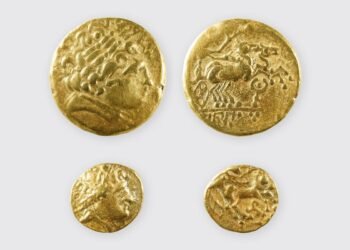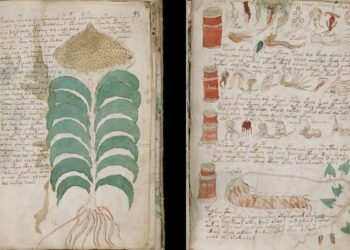Archaeologists from the Austrian Archaeological Institute and the Greek Ministry of Culture have made significant progress in their excavation of a large temple complex at Kleidi-Samikon in western Peloponnese, Greece.

Originally discovered in 2022, the structure, identified as a temple likely dedicated to Poseidon, has proven to be more monumental than previously thought. The temple measures approximately 28 meters in length and nearly 9.5 meters in width, consisting of two main rooms, a vestibule, and possibly a rear hall, making it one of the most significant finds related to ancient Greek sanctuaries in recent years.
This discovery is notable not only for its size but also for its unique architectural layout. Birgitta Eder, head of the Athens branch of the Austrian Archaeological Institute, stated, “We are looking at an Archaic temple consisting of two main rooms…the ground plan of the temple is unusual. So far we know of no comparable buildings.” Researchers speculate that the dual-room design might indicate either a shared worship space for two deities or a central area for meetings related to the Triphylian League, a coalition of nearby cities with shared religious and cultural practices.

Excavations this year have uncovered additional details about the temple’s construction and renovations. Erofili-Iris Kolia, director of the Ephorate of Antiquities of Elis, explained, “In the second half of the 4th or first half of the 3rd century BCE, the Archaic temple from the 6th century BCE was remodeled. In the process, the old roof tiles were evenly applied as a subfloor for the new floor. They served as insulation against groundwater and to stabilize the floor. Something that still works today.” The pottery found on-site has helped date these modifications, linking them to the Archaic and early Hellenistic periods.

Among the artifacts discovered is a bronze plaque with an inscription, which was likely once affixed to a wall in the temple. Due to its fragile condition, the plaque was recovered with surrounding earth for preservation, and further analysis is expected to reveal its contents. Eder commented, “Initial X-ray images show parts of an extensive inscription,” adding that the full restoration could offer valuable insights into the history and role of the sanctuary.
Another important find is a large marble basin, known as a perirrhanterion, used in ritual purification. Though discovered in fragments, the basin, measuring about one meter in diameter, was repaired with iron clamps in ancient times and can now be nearly reconstructed thanks to fragments found both in 2022 and in recent excavations.

The location of this sanctuary aligns closely with descriptions by the ancient historian Strabo, who referred to a Poseidon temple nestled within a “grove of wild olive trees.” The temple’s placement near the coast, which was even closer to the sea in antiquity, suggests that it held not only religious but also strategic significance, particularly given its proximity to the ancient fortress of Samikon. The layout and robust construction indicate that the sanctuary served as a center for communication and regional identity for the Triphylian cities, a point supported by Eder, who noted that it “played a central importance in the region” for centuries.

Clearing vegetation north of the temple has also revealed the remains of a double-walled structure, believed to be part of the sanctuary’s boundary and potentially serving as flood protection from nearby lagoons. This wall was first identified by Wilhelm Dörpfeld in the early 20th century.
The ongoing research is a collaboration involving Austrian, German, and Greek experts, with funding from the Gerda Henkel Foundation and support from the Austrian Archaeological Institute and the Greek Ministry of Culture. The team plans further excavations to explore the full extent of the sanctuary and to uncover additional structures that may include altars, treasure houses, or pathways.
More information: The Austrian Academy of Sciences






















